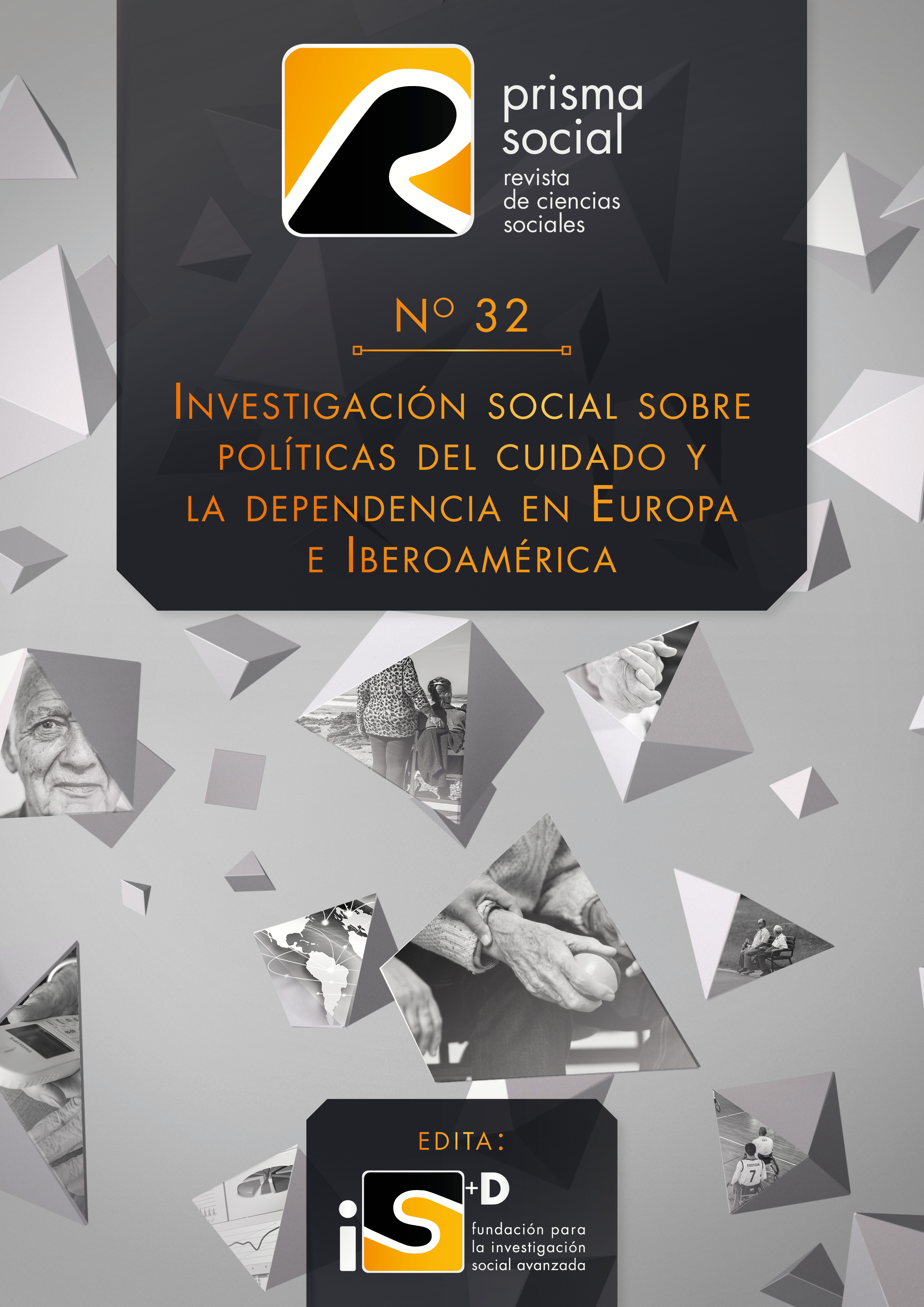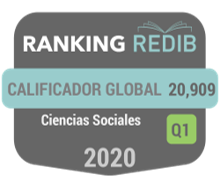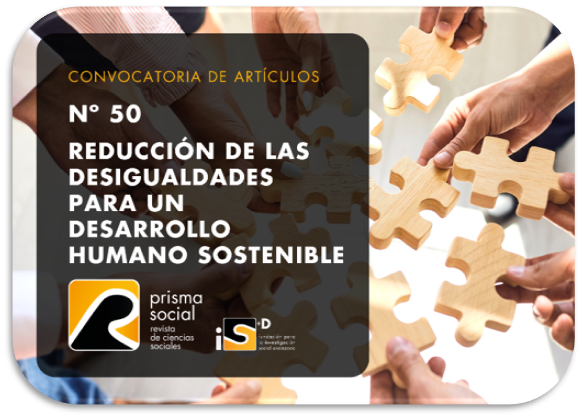Challenging inequality through the Spanish long-term care model
The goal to guarantee adequate support for the most vulnerable population
Keywords:
dependency, long-term care, autonomy, poverty, home careAbstract
In Spain, as in most of the neighboring countries, socioeconomic and demographic changes have implied significant challenges for the care system. Providing sufficient support to the population with fewer economic resources has been one of these challenges, although this issue has occupied a secondary place in the analysis of long-term care models.
This article analyzes the inequalities experienced by elderly people in a situation of dependency when they try to access formal and informal at home care based on their income level. This same perspective is applied to nearby countries to compare the capacity of the Spanish care model to support population with fewer resources in the international scenario. The analysis will be supported by the latest Survey of Health, Aging and Retirement in Europe (SHARE) with data from the year 2017.
The results show that the Spanish model has a low capacity to provide support to older people with care needs, regardless of their income level. However, it is the population with medium-low resources that experiences the greatest accessibility issues to formal care. This is fundamentally the result of the institutional design of the care model, highly focused on the population with fewer resources, and highly commercialized for the rest. Everything indicates that to overcome these limitations it is not only necessary to advance in the defamiliarization of care services and at home-care, but also to incorporate a greater number of community stakeholders in the attention of dependent population.
Downloads
References
Aguilar Hendrickson, M., Corera Oroz, C., Goñi, I., Laparra Navarro, M., y Pérez Eransus, B. (2002). La atención a domicilio en Navarra. Universidad Públi-ca de Navarra.
Aguilar-Hendrickson, M. (2014) Apuntes para un replanteamiento de los servicios sociales en España (Serie Documentos de Trabajo 5.12). Funda-ción FOESSA. http://www.foessa2014.es/informe/uploaded/documentos_trabajo/04112014034343_2219.pdf
Aguilar-Hendrickson, M. (2020), Long-term care in Spain: a reform failure or the regulation of a development path?, International Journal of Sociology and Social Policy, 40(11),1301-1317. https://doi.org/10.1108/IJSSP-02-2019-0043
Albertini, M., y Pavolini, E. (2015). Unequal inequalities: the stratification of the use of formal care among older europeans. The Journals of Gerontology Series B: Psychological Sciences and Social Sciences, 3, 510-521. https://doi.org/10.1093/geronb/gbv038
Arlotti, M., y Aguilar‐Hendrickson, M. (2017). The vicious layering of multilevel governance in Southern Europe: The case of elderly care in Italy and Spain. Social Policy y Administration, 52(3), 646–661. https://doi.org/10.1111/spol.12351
Asociación de Directoras y Gerentes de Servicios Sociales (2020). Informe anual del observatorio estatal de la dependencia. https://www.directoressociales.com/documentos/dictamenes-observatorio.html
Bakx, P., Meijer, C. de, Schut, F., y Doorslaer, E. van. (2015). Going Formal or Informal, Who Cares? The Influence of Public Long-Term Care Insurance. Health Economics, 24(6), 631-643. https://doi.org/10.1002/hec.3050
Benach, J.; Vergara, M.; Muntaner, C. (2008). Desigualdad en salud: la mayor epidemia del siglo XXI. Papeles de relaciones ecosociales y cambio global, Nº. 103, págs. 29-40
Bennett, L., Honeyman, M., Bottery, S. (2018) New models of home care. New York: The King's Fund.
Bergmann, M., A. Scherpenzeel and A. Börsch-Supan (Eds.) (2019). SHARE Wave 7 Methodology: Panel Innovations and Life Histories. Munich: MEA, Max Planck Institute for Social Law and Social Policy.
Börsch-Supan, A. (2020). Survey of health, ageing and retirement in Europe (Share) wave 7 [Data set]. SHARE–ERIC. https://doi.org/10.6103/SHARE.W7.710
Börsch-Supan, A., Brandt, M., Hunkler, C., Kneip, T., Korbmacher, J., Malter, F., Schaan, B., Stuck, S., y Zuber, S. (2013). Data resource profile: The sur-vey of health, ageing and retirement in europe(Share). International Journal of Epidemiology, 42(4), 992-1001. https://doi.org/10.1093/ije/dyt088
Carrieri, V., Novi, C. D., y Orso, C. E. (2017). Home Sweet Home? Public Financing and Inequalities in the Use of Home Care Services in Europe. Fiscal Studies, 38(3), 445-468. https://doi.org/10.1111/j.1475-5890.2017.12138
Carrillo, E., Cervera, M., Gil, V., Rueda, Y. (2010). Claves para la construcción del espacio sociosanitario en España. Antares Consulting. https://www.antares-consul-ting.com/uploads/TPublicaciones/5a9dd00bc8082062e4556ccd4bc2888c8d43633d.pdf
Carrino, L., y Orso, C. E. (2015). Eligibility regulations and formal home-care utilisation among the vulnerable older people in SHARE Wave 5. En A. Börsh-Supan, T. Kneip, H. Litwin, M. Myck, y G. Weber, Ageing in Europe—Supporting Policies for an Inclusive Society (pp. 343-352). De Gruyter.
Chuliá, E. (2017). One-person households: low poverty risk and rising expendi-ture (Focus on Spanish Society). FUNCAS. https://www.funcas.es/wp-content/uploads/Migracion/Publicaciones/PDF/2085.pdf
Chuliá, E. (2019). La evolución de la población contemporánea: motivos para la satisfacción y la inquietud. Información Comercial Española, 908, 9-21.
Comisión Europea (2018). The Silver Economy. https://op.europa.eu/en/publication-detail/-/publication/a9efa929-3ec7-11e8-b5fe-01aa75ed71a1
Díaz-Veiga, P., y Sancho, M. (2013). Residencias, crisis y preferencias de las personas mayores. Revista Española de Geriatría y Gerontología, 48(3), 101-102. https://doi.org/10.1016/j.regg.2013.01.003
Fernández García, T., Ponce de León Romero, L. (2013). Envejecimiento activo: recomendaciones para la intervención social desde el modelo de gestión de casos. Portularia: Revista de Trabajo Social, 13(1), 87-97. https://doi.org/10.5218/prts.2013.0010
Ferrán Zubillaga, A., Guinot Viciano, C., Berasategui Otegui, A. (2019). Gobernan-za colaborativa para la inclusión social. Una experiencia de investigación y acción participativa. Catarata.
Floridi, G., Carrino, L., y Glaser, K. (2020). Socioeconomic Inequalities in Home-Care Use Across Regional Long-term Care Systems in Europe. The Jour-nals of Gerontology, 76(1), 121–132. https://doi.org/10.1093/geronb/gbaa139
FOESSA (2019). VIII Informe sobre exclusión y desarrollo social en España. Fundación FOESSA. https://caritas-web.s3.amazonaws.com/main-files/uploads/sites/16/2019/05/Informe-FOESSA-2019-completo.pdf
García-Gómez, P., Hernández-Quevedo, C., Jiménez-Rubio, D., y Oliva-Moreno, J. (2015). Inequity in long-term care use and unmet need: Two sides of the same coin. Journal of Health Economics, 39, 147-158. https://doi.org/10.1016/j.jhealeco.2014.11.004
Heger, D., y Korfhage, T. (2018). Care choices in Europe: To Each According to His or Her Needs? INQUIRY: The Journal of Health Care Organization, Pro-vision, and Financing, 55, 1-16. https://doi.org/10.1177/0046958018780848
Holstein, M.B., Parks. J.A., y Waymack, M.H. (2010). Ethics, aging, and society. The critical turn. Springer.
Huber, M.; Rodriguez, R.; Hoffmann, F.; Gasior, K.; Marin, B. (2009). Long-term care for older people. OCDE.
Huisman, M., Kunst, A. E., y Mackenbach, J. P. (2003). Socioeconomic inequali-ties in morbidity among the elderly; a European overview. Social Science y Medicine, 57(5), 861-873. https://doi.org/10.1016/S0277-9536(02)00454-9
Ilinca, S., Rodrigues, R., y Schmidt, A. E. (2017). Fairness and eligibility to Long-Term Care: an analysis of the factors driving inequality and inequity in the use of home care for older europeans. International Journal of Environ-mental Research and Public Health, 14(10), 1224-1239. https://doi.org/10.3390/ijerph14101224
IMSERSO (2019). Estadística anual de prestaciones y servicios del sistema de autonomía y atención a la dependencia. Recuperado de https://www.imserso.es/imserso_01/autonomia_personal_dependencia/saad/index.htm
Instituto Nacional de Estadística. (2019a). Indicadores de mortalidad. Recuperado de https://www.ine.es/dynt3/inebase/index.htm?padre=1153&capsel=1153
Instituto Nacional de Estadística. (2019b). Indicadores urbanos, Edición 2019. [Notas de prensa]. Recuperado de https://www.ine.es/prensa/ua_2019.pdf
Instituto Nacional de Estadística. (2019c). Indicadores de Estructura de la Población. Recuperado de https://www.ine.es/jaxiT3/Tabla.htm?t=3198&L=0
Jiménez-Martín, S., y Prieto, C. V. (2012). The trade-off between formal and informal care in Spain. The European Journal of Health Economics, 13(4), 461-490. https://doi.org/10.1007/s10198-011-0317-z
Laferrère, A., y Bosch, K. V. den. (2015). Unmet need for long-term care and social exclusion. En A. Börsh-Supan, T. Kneip, H. Litwin, M. Myck, y G. Weber, Ageing in Europe—Supporting Policies for an Inclusive Society (pp. 331-342). De Gruyter.
LEY ORGÁNICA 39/2006 de Promoción de la Autonomía y de Atención a las personas en situación de dependencia.
Martín, U., Domínguez Rodríguez, A., y Bacigalupe, A. (2019). Desigualdades sociales en salud en población mayor: una aportación desde la salud pública al debate sobre el retraso de la edad de jubilación en España. Gaceta Sani-taria, 33(1), 82-84.
Martínez Virto, L. (2009). Gestión de los cuidados, desnacionalización y precariedad laboral: Una perspectiva comparada. Alternativas, 17, 221-236. https://doi.org/10.14198/ALTERN2010.17.12
Martinez Virto, L. y Hermoso Humbert, A. (2020, en prensa). Hacia un modelo público de cuidados en la comunidad. Revista Española de Sociología.
Martínez, T., Díaz-Veiga, P., Sancho, M., y Rodríguez, P. (2014). Cómo y dónde quiero que me cuiden: la atención centrada en la persona, un nuevo mo-delo de atención (Serie Cuadernos prácticos). Fundación Matia. https://www.matiafundazioa.eus/documentos/ficheros/publicaciones/3.euskera-castellano.pdf
Martínez-Buján, R. (2009). Política social, migración internacional y trabajo de cuidados: el caso español. En Lorenzo Cachón y Miguel Laparra (eds), Inmigración y políticas sociales (pp. 269-293). Bellaterra.
Montserrat, J. (2013). La ley de dependencia en caída libre. Agathos: Atención sociosanitaria y bienestar, 2, 62-64.
Montserrat, J. (2014). El impacto de la crisis en el Sistema de Atención a la Dependencia ¿Hacia un cambio de modelo? (Documentos de Trabajo 5.6). Fundación FOESSA. http://www.foessa2014.es/informe/uploaded/documentos_trabajo/23102014144847_4790.pdf
MSCBS (2018). Limitación y Discapacidad. Encuesta Nacional de Salud de España (ENSE), 2017 (Serie Informes monográficos). Ministerio de Sani-dad, Consumo y Bienestar Social. https://www.mscbs.gob.es/estadEstudios/estadisticas/encuestaNacional/encuestaNac2017/LIMITACION_Y_DISCAPACIDAD.pdf
OECD (2018). Health at a glance: Europe 2018: state of health in the EU cycle. OECD. https://doi.org/10.1787/health_glance_eur-2018-en
Oficina Europea de Estadística. (2019). Population (demography, migration and projections). Recuperado de https://ec.europa.eu/eurostat/statistics%20explained/index.php?title=People_in_the_EU_-_population_projections#Population_projections
Rodríguez Cabrero, G., Marbán Gallego, V. (2013). La atención a la dependencia en una perspectiva europea: de la asistencialización a la cuasi-universalización. En E. Del Pino, y M. J. Rubio (eds.), Los Estados de bie-nestar en la encrucijada: políticas sociales en perspectiva comparada (pp. 237-261). Tecnos.
Rodríguez Castedo, Á. (2005). Atención a las personas en situación de dependencia en España. Libro blanco. Ministerio de Trabajo y Asuntos So-ciales. https://www.imserso.es/InterPresent2/groups/imserso/documents/binario/libroblanco.pdf
Rodríguez, M. (2014). Use of informal and formal care among community dwelling dependent elderly in Spain. European Journal of Public Health, 24(4), 668-673. https://doi.org/10.1093/eurpub/ckt088
Roig, S., y Hernández, S. (2020). Manual del programa «siempre acompaña-dos». Fundación «la Caixa».
Sipilä, J. (1997). Social care services: The key to the Scandinavian welfare model. Avebury.
Srakar, A., Hrast, M. F., Hlebec, V., y Majcen, B. (2015). Social exclusion, welfare regime and unmet long-term care need: Evidence from SHARE. En A. Börsh-Supan, T. Kneip, H. Litwin, M. Myck, y G. Weber, Ageing in Europe—Supporting Policies for an Inclusive Society (pp. 189-198). De Gruyter.
Suanet, B., Groenou, M. B. V., y Tilburg, T. V. (2012). Informal and formal home-care use among older adults in Europe: Can cross-national differ-ences be explained by societal context and composition? Ageing y Society, 32(3), 491-515. https://doi.org/10.1017/s0144686x11000390
Verbeek-Oudijk, D., Woittiez, I., Eggink, E., y Putman, L. (2015). Who cares in Europe? Geron, 17(1), 62-65. https://doi.org/10.1007/s40718-015-0119-y
Zalakain, J. (2017). Atención a la dependencia en la UE: Modelos, tendencias y retos. Revista Derecho social y empresa, 8, 19-39.
Downloads
Published
How to Cite
Issue
Section
License
Los derechos de edición pertenecen a la Fundación iS+D para la Investigación Social Avanzada, entidad que edita la Revista Prisma Social, y es necesario su permiso para cualquier reproducción. En todo caso, será necesario citar la procedencia de cualquier reproducción total o parcial.
La publicación de artículos o reseñas en la Revista Prisma Social no da derecho a remuneración alguna.
Política de acceso abierto
La publicación de la Revista Prisma Social y su difusión se realiza de forma abierta a través de Internet.
La Revista Prisma Social ofrece acceso libre y abierto inmediato a su contenido de forma totalmente gratuita con el fin de hacer llegar la investigación científica a toda la sociedad y con el objetivo de crear una cultura reflexiva encaminada a la comprensión de los comportamientos sociales desde una perspectiva global.
Todos los contenidos digitales de la Revista Prisma Social son de acceso libre y gratuito y se publican bajo una licencia de Creative Commons:

está bajo una licencia de Creative Commons Reconocimiento-NoComercial-SinObraDerivada 3.0 España License.
Creado a partir de la obra en www.isdfundacion.org
Bajo esta licencia, está permitida la reproducción y difusión de los contenidos de la revista con fines educativos o de investigación, sin ánimo de lucro, siempre y cuando estos no se modifiquen, se cite la procedencia (Prisma Social, Revista de ciencias sociales), y la autoría.
Esta licencia a la que se acoge la Revista Prisma Social permite copiar, distribuir, exhibir los textos e imágenes de la revista, siempre que se cumplan las siguientes condiciones:
- Reconocimiento: Debe reconocerse y respetarse la autoría de la obra de la manera especificada por el autor y la entidad editora (Revista Prisma Social – Fundación iS+D).
- No comercial: No se puede utilizar esta obra para fines comerciales.
- No derivados: No se puede alterar, transformar o generar una obra derivada a partir de esta obra.
Se deberán establecer claramente los términos de esta licencia para cualquier uso o distribución de los documentos. Se podrá prescindir de cualquiera de estas condiciones si se obtiene el permiso expreso del autor/a.
Desde la Revista de Prisma Social se permite y se invita a los/as autores/as a ampliar la visibilidad, alcance e impacto de sus artículos publicados en la revista mediante la redifusión (auto-archivo) de los mismos en:
1. Sus espacios web personales (web, blog, redes sociales, foros científicos, etc.).
2. Archivos abiertos institucionales (archivos universitarios, Hispana, Europeana, etc.).
3. Redes sociales de naturaleza académica y científica (ResearchGate, Academia.edu, Getcited.org).
Se requiere que en dichas publicaciones se detallen todos los datos bibliográficos de la publicación.
Para más información, puede descargar y consultar las Condiciones de Publicación:























.png)




